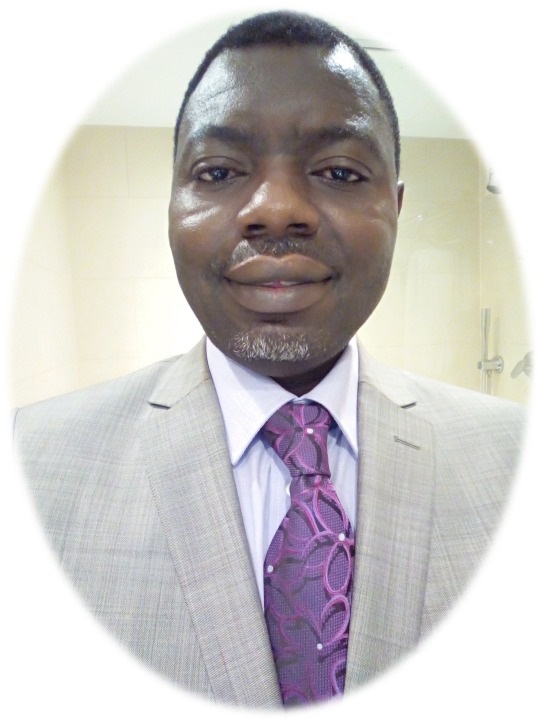Connaissances et attitudes des échographistes en matière d’effets biologiques des ultrasons en pratique obstétricale au Togo
DOI:
https://doi.org/10.55715/jaim.v13i2.230Keywords:
ultrasound, biological effects, thermal and mechanical index, gynecology-obstetrical, ultrasound, Togo.Abstract
Objective: To assess the knowledge and attitudes of sonographers regarding the biological effects of ultrasound in gynecology-obstetrical practice in Togo.
Methodology: Cross-sectional study carried out from February 1 to April 30, 2020 including 124 sonographers performing gynecology-obstetric ultrasound in public and private health structures in Togo.
Results: Sonographers were dominated by the residents of gynecology (25.81%) followed by medical assistants (24, 19%) and radiologists (21.77%). Their professional experience was less than 5 years in 62.90%. They were 47.58% to have once received an education on the biological effects of ultrasound and 37% to be unaware of its existence. 45.97% and 41.13% respectively knew that performing Doppler and endovaginal ultrasound should be exceptional in early pregnancy. The minority (31%) of sonographers with knowledge of these biological effects could cite its two major effects. They were 42% unaware that their devices displayed TI and MI indices and only 16.13% consulted the values of these indices. Most sonographers (68,54 %) had no idea what practical attitudes to adopt when faced with elevated thermal and mechanical indexes. Training on the biological effects of ultrasound was deemed necessary before any ultrasound practice by 37.9% of sonographers.
Conclusion: The level of knowledge of sonographers and the attitudes adopted regarding the biological effects of ultrasound were unsatisfactory. Efforts remain to be made by the health authorities, trainers and sonographers with a view to judicious use of ultrasound imaging in gyneco-obstetrical explorations in Togo.
RESUME
Objectif : Evaluer les connaissances et attitudes des échographistes en matière d’effets biologiques des ultrasons en pratique obstétricale au Togo.
Méthodologie : Etude transversale réalisée du 1er février au 30 avril 2020 incluant 124 échographistes réalisant l’échographie obstétricale dans les structures sanitaires publiques et privées du Togo.
Résultats : Les échographistes étaient dominés par des médecins en spécialisation de gynécologie (25,81%) suivi des assistants médicaux (24,19%) et des radiologues (21,77%). Leur expérience professionnelle était inférieure à 5 ans dans 62,90%. Ils étaient 47,58% à avoir une fois reçu un enseignement sur les effets biologiques des ultrasons et 37% à ignorer son existence. Respectivement 45,97% et 41,13% savaient que la réalisation du doppler et l’échographie endovaginale devraient être exceptionnelle en début de grossesse. La minorité (31%) des échographistes ayant connaissances de ces effets biologiques ont pu citer ses deux effets majeurs. Ils étaient 42% à ignorer que leurs appareils affichaient les indices TI et MI et seulement 16,13% consultaient les valeurs de ces indices. La plupart des échographistes (68,54 %) n’avait aucune idée sur les attitudes pratiques à adopter devant une élévation des indices thermique et mécanique. Une formation sur les effets biologiques des ultrasons était jugée nécessaire avant toute pratique échographique par 37,9% des échographistes.
Conclusion : Le niveau de connaissances des échographistes et les attitudes adoptées en matière d’effets biologiques des ultrasons étaient peu satisfaisants. Des efforts restent à faire par les autorités sanitaires, les formateurs et les échographistes en vue d’une utilisation judicieuse de l’imagerie ultrasonore dans les explorations obstétricales au Togo.
Downloads
References
2. Millner R. Ultrasound Interactions in Biology and Medicine. Springer Science & Business Media; 2012. 216 p.
3. Izadifar Z, Babyn P, Chapman D. Mechanical and Biological Effects of Ultrasound: A Review of Present Knowledge. Ultrasound Med Biol. 2017;43(6):1085‑104.
4. Akhtar W, Arain MA, Ali A, Manzar N, Sajjad Z, Memon M. et al.‘Ultrasound biosafety during pregnancy: What do operators know in the developing world?’, Journal of Ultrasound in Medicine. 2011;30: 981–985. https://doi.org/10.7863/jum.2011.30.7.981
5. Marinac-Dabic D, Krulewitch C, & Moore R. ‘The safety of prenatal ultrasound exposure in human studies. Epidemiology. 2002; 13(3): S19–S22.
6. Adambounou K, Bathily E. H. A. L, Adigo A. M. Y, Gbandé P, Bakpatina-Batako K. D, Sonhaye L, Adjenou V. Knowledge of Togolese Doctors on Biological Effects of Ultrasound and Their Attitudes towards the Ultrasonographic Explorations Performed in Lome (Togo). Open J Biophys. 2017; 8(1):1‑8.
7. Matar M, Picone O, Dalmon C, Ayoubi J-M. Évaluation des connaissances des échographistes sur les clichés d’échographie de dépistage du deuxième trimestre recommandés par le Comité technique national de l’échograpahie. J Gynecol Obst Bio R. 2013 ; 42 (5) : 473-8.
8. Essiben F, Foumane P, Moifo B, Dohbit J, Mboudou E, Doh A. Pratique de l’échographie de routine dans le suivi de la grossesse à Yaoundé (Cameroun): analyse des connaissances des prescripteurs. Health Sci Dis. 2016 ; 17(1) : 548.
9. Boyer J-P, Porret P. Echos et propos des échographistes sur l’échographie pendant la grossesse. 1989;10(3):135‑44.
10. Piscaglia F, Tewelde A. G, Righini R, Gianstefani A, Calliada F, Bolondi L. Knowledge of the bio-effects of ultrasound among physicians performing clinical ultrasonography: Results of a survey conducted by the Italian Society for Ultrasound in Medicine and Biology (SIUMB). J Ultrasound. 2009;12 (1):6‑11.
11. Fowlkes J.B., Bioeffects Committee of the American Institute of Ultrasound in Medicine. American Institute of Ultrasound in Medicine Consensus Report on Potential Bioeffects of Diagnostic Ultrasound: Executive Summary. 2013.
12. Stratmeyer M., Greenleaf J., Dalecki D., Salvesen K. Fetal ultrasound: mechanical effects. J Ultrasound Med. 2008; 27, 597–605.
13. Campbell J.D., Elford R.W., Brant R.F. « Case-control study of prenatal ultrasonography exposure in children with delayed speech ». Can. Med. Assoc. J. 1993; 149:1435–1440.
14. The safety Group of the British Medical Ultrasound Society. Guidelines for the safe use of diagnostic ultrasound equipment. Ultrasound. 2010;18(2):52‑9.
15. Sheiner E., Abramowick J., Shoham-Vardi. What do clinical users know regarding safety of ultrasound during pregnancy? Ultrasound Med. 2007: 26 : 319-325.
16. Jennifer B., Kimberly T. Safety pratice of sonographers and their knowledge of the biologic effects of sonography. Journal of Diagnostic Medical Sonography. 2011;26:252-261.
17. Shankar H, Pagel PS. Potential Adverse Ultrasound-related Biological Effects. A Critical Review. Anesthesiol J Am Soc Anesthesiol. 2011;115(5):1109‑24.
18. Joy J, Cooke I, Love M. Is ultrasound safe? Obst et Gynaecol. 2006;8(4):222‑7.
19. Duck F.A. The Meaning of Thermal Index (TI) and Mechanical Index (MI) Values. BMUS Bull. 1997;5(4):36‑40.
20. Société canadienne des échographistes médicaux. Lignes directrices et politiques sur la pratique professionnelle de l'échographie au Canada. 2008
Downloads
Published
How to Cite
Issue
Section
License

This work is licensed under a Creative Commons Attribution-NonCommercial-ShareAlike 4.0 International License. Copyright @2017. This is an open-access article distributed under the terms of the Creative Commons Attribution-NonCommercial-ShareAlike 4.0 International License (http://creativecommons.org/licenses/by-nc-sa/4.0/) which permits unrestricted non-commercial used, distribution and reproduction in any medium






